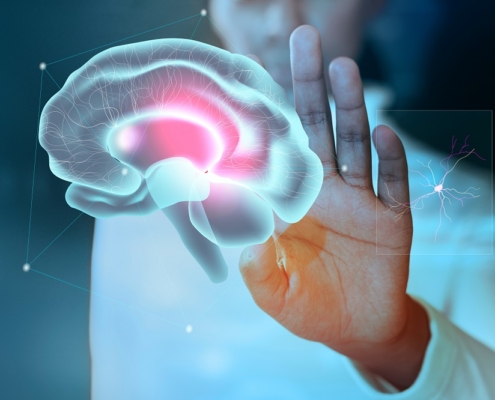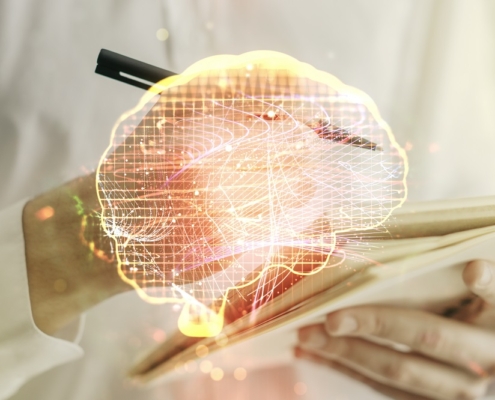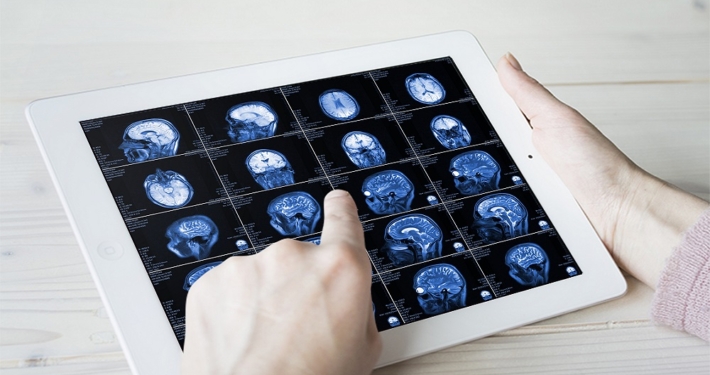What is EMG?
Electroneuromyography (ENMG) or more commonly known as Electromyography (EMG) consists of the words electro (electrical), neuro (nerve), myo (muscle) and graphy (writing), and allows the electrical signals of nerves and muscles to be visualized.
Sensory nerves and motor nerves can be examined separately. The sensory nerves, which we call sensory nerves, allow us to feel the effects coming from the environment. For example, we perceive whether something we touch is hot or cold thanks to these nerves. Motor nerves, in other words, motor nerves, also provide the transmission of movement-related commands from the brain and spinal cord to the muscles and thus the muscle contractions necessary for movement.
EMG REVIEWS:
- Carpal Tunnel Syndrome
- Polyneuropathy
- Trap Neuropathy
- Radiculopathy-Plexus Protocol
- Myasthenia Protocol
- Myopathy Protocol
- Cranial Protocol
- Motor-Neuron Disease Protocol
- R-R Interval Variation Analysis
- Pelvic EMG
Things to Consider When Coming to EMG:
- The patient should be full
-
Clothes that can be easily put on and taken off should be preferred.
-
Skin should not be applied with creams etc. Skin should be clean. If possible, shower should be taken before coming.
- Medications used should definitely be reported.
How is EMG examination performed?
In the examinations performed according to the protocol deemed appropriate by the doctor, after the ground electrode recording electrode is connected to the patient, a controlled electrical stimulus is given with the stimulation electrode and electrophysiological data is obtained thanks to this stimulus.
What is done during EMG examinations?
- Measurement of nerve conduction speeds of sensory nerves, motor nerves and both, measurement of sensory potential and muscle action potential amplitudes
- Measurement and temporal evaluation of reflex arc (H), and motor late responses (F), comparison with the opposite extremity
- Evaluation of resting activities, motor unit potentials and maximal contraction samples of muscles with needle electromyography method, evaluation of nerve damage to muscles (motor neuron diseases, cervical disc herniation, entrapment neuropathies, nerve injuries or cuts) or diseases of muscles themselves
- Evaluation of muscle-nerve junction diseases (myastania gravis, Botulism – canner disease – etc.) where electrical transmission from nerves to muscles is evaluated
By doing this, the degree and location of these diseases are determined and the neurologist arranges diagnosis and treatment according to the results.
IN WHAT CASES IS EMG REQUIRED?
- Lumbar and cervical disc herniations,
- Numbness in hands and feet, pain and burning complaints,
- Numbness in diabetes,
- Numbness in dialysis patients,
- Muscle wasting and twitching,
- Excessive muscle contraction,
- Muscle pain,
- Occasional attacks of weakness,
- Especially in the later hours of the day, decreased strength, drooping eyelids,
- Facial paralysis,
- Weakness in certain muscle groups,
- Movement and sensory defects due to accidents and stab wounds,
- Movement and sensory defects due to injections,
- Movement and sensory defects due to poisoning and drugs
 https://drturanpoyraz.com/en/wp-content/uploads/2023/07/kafatravmasi.jpg
666
1000
drturan_pyrzawp
https://localveri.net/drturanpoyraz/wp-content/uploads/2024/07/logo2.png
drturan_pyrzawp2023-07-18 17:33:472024-08-01 16:32:02HEAD TRAUMA AND BRAIN INJURY
https://drturanpoyraz.com/en/wp-content/uploads/2023/07/kafatravmasi.jpg
666
1000
drturan_pyrzawp
https://localveri.net/drturanpoyraz/wp-content/uploads/2024/07/logo2.png
drturan_pyrzawp2023-07-18 17:33:472024-08-01 16:32:02HEAD TRAUMA AND BRAIN INJURY






